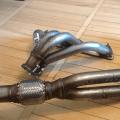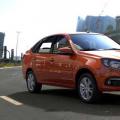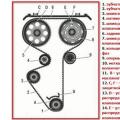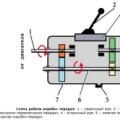Before proceeding to the description of production technologies, let us note that the so-called "casting" has a large number of advantages. Moreover, they are placed in opposition not only to iron stamping, but also to forged products, which are traditionally considered one of the most durable and durable.
Benefits only
If we talk about the advantages of "casting" in relation to "forging", it should be noted that they have a more affordable cost. Among imported products, it can reach hundreds of percent. Of course, on the domestic market today you can find products of Russian enterprises, which in the past were focused on meeting the needs of the defense complex. Such forged wheels are relatively inexpensive. But even they cannot compete with the "casting" in terms of price.
In relation to stamped iron discs, cast "wheels" look even more preferable. Their advantages over steel stamping are as follows:
- Light weight. This is perhaps the main advantage of light alloy casting. As a result, the load on the chassis is significantly reduced, the dynamic performance of the vehicle is improved, and fuel consumption is reduced. In addition, the passive safety of the car is significantly increased, due to the fact that contact with the roadway when hitting an obstacle is restored much faster. Thus, handling is improved.
- Attractive design. To be perfectly precise, the design can be different. The choice of a particular model is a matter of taste and personal preference. But the main thing is that it just exists. Unfortunately, this cannot be said with regard to iron stamping.
- Finally, it is impossible not to note the practicality of such a solution. Alloy wheels do not need any special care. They do not rust and do not need to be painted. To maintain their proper appearance, it is enough to periodically wash them and simply wipe them with a rag.
A little bit of negative
Talking about the advantages of "casting", it would be unfair not to mention its disadvantages. And they are. This is, among other things, the fragility of the disc. The fact is that the alloy in the casting process gets a free non-directional crystal structure. This negatively affects its strength. Of course, we are not talking about problems in daily use. But when hitting an obstacle at high speed, mechanical damage is not excluded, which, moreover, are difficult to repair. Although in modern conditions of production of rims, this circumstance is gradually losing its relevance. Due to the use of low pressure casting technology, as well as back pressure casting of parts, this minus is leveled. Therefore, we recommend that when choosing to pay attention only to high-quality products manufactured under well-known trademarks and certified in Russia.
How are alloy wheels made?
Modern casting technologies involve the use of special molds for pouring metal alloys. The metal in the mold cools down, but this is not the end of the workpiece processing. After that, the part is placed in a chamber heated to several hundred degrees (usually the temperature is maintained within 500 degrees Celsius). Heat treatment alternates with sharp cooling of the part. This process is called hardening and allows you to achieve a uniform metal structure. In addition, in order to bring the physical properties of the metal closer to structural equilibrium, a stage of artificial aging is provided during the manufacture of discs. It involves heating and holding the part for 5-6 hours at a phase transformation temperature (about 150-220 degrees), after which the disc is cooled under atmospheric conditions. The final links in the production chain are machining and painting.
Aluminum in the production of alloy wheels
One of the most popular types of raw materials used for the manufacture of alloy wheels is aluminum, to which the necessary components are added (as a rule, silicon acts as an additive). The advantages of this design solution are obvious:
- First, aluminum is a relatively inexpensive metal.
- Secondly, it is a material with a low specific gravity, since the density of aluminum is only 2.7 g / cm3.
- Finally, this type of metal does not corrode, which significantly increases the service life of the finished product. This effect is achieved due to the ability to form a strong oxide film of Al2O3 on the surface.
Finally, it should be noted that aluminum has an extremely low thermal conductivity. This makes it possible to achieve better cooling of the brake parts of the vehicle. In combination with the high precision of manufacturing rims from aluminum-silicon alloys and other components, all of the above factors are the indisputable advantages of "casting" in this category.
As usual, not a single barrel of honey is complete without a fly in the ointment. Now about the disadvantages: this is, first of all, the low level of plasticity of the material. Thus, due to significant shock loads, aluminum rims do not bend, but crack. That is, they cannot be repaired.
A few words about the benefits of magnesium
Magnesium is often an alternative to aluminum in the production of alloy wheels. As a rule, alloys based on this metal also contain aluminum, but its proportion is insignificant. The main advantage of magnesium discs is their extremely low weight, because the density of the metal is only 1.7 g / cm3. In addition, this type of material is characterized by high specific strength. According to the properties indicated above, magnesium unambiguously outperform aluminum "casting". In all other respects, they are not inferior to them. But magnesium has one not very good property - alloys based on it are unstable to aggressive environments, they are prone to corrosion. To eliminate this problem, manufacturers prefer to use multi-layer coatings.
Instead of an afterword
Returning to the original formulation of the question "magnesium or aluminum", we can say that there is no definite answer to it. It all depends on the specific operating conditions of the car. If you choose rims for everyday driving, then it is advisable to give preference to the more practical aluminum. If technical fine-tuning of the car is supposed with the simultaneous improvement of dynamics and other characteristics, then you should pay attention to magnesium.
Disk geometry
When choosing wheels for "ordinary" use (we do not take into account all kinds of tuning), we strongly recommend that you adhere to the parameters as close as possible to the factory ones. Why is this so important? Strong changes in parameters such as width, offset, diameter and weight of the disc can affect both the safety and convenience of driving, and the resource of the suspension elements. So, for example, if we talk about the diameter of the disc, then its too large value (with the same outer diameter of the wheel) will adversely affect its weight.
When choosing wheel disks, the proverb "measure seven times" is true
More wheel weight means more unsprung masses, which, in turn, leads not only to increased load on the suspension, but also to a decrease in the smoothness of the vehicle. Also, due to the greater inertia, the heavy wheel is less willing to follow the road profile, while the lighter wheel keeps the tire in contact with the surface longer, improving the stability of the car. In addition, an increase in wheel weight to some extent worsens equally important characteristics - the braking and accelerating dynamics of the car. Needless to say, larger discs wrapped in low-profile rubber are easier to damage on Russian roads.

Larger discs wrapped in low-profile rubber are easier to damage on Russian roads
An excessive increase in the width of the wheel, coupled with wider tires, has its advantages to a certain extent (the vehicle's susceptibility to side loads improves), but there are probably more disadvantages here: in addition to an increase in mass, this can have a worse effect on the stability of the car when driving along irregularities. On a track, a car with wider wheels will obviously be less stable, and its handling will become more "nervous". But even more "harmful" is the play with the disc offset, which can worsen the situation even more: the smaller the offset (the wheel "sticks out" more outward), the more the optimal wheel run-in shoulder (most often negative) is violated, the more sensitive to irregularities it becomes steering, and the load on the suspension elements is greater. Another danger of an increase in the break-in arm is the lack of stabilizing torque when braking with one of the faulty brake circuits. How far can you deviate from the standard parameters? There is no clear answer, because the chassis of each car is individual and reacts to such changes in different ways, however, changes in the outreach by 2-3 mm often remain without consequences.

When choosing, do not be lazy and “try on” the wheels to the tires - this can be done in numerous tire calculators. The rim should not be too wide or too narrow: for example, for a 205 / 55R16 tire, the rim width should be in the range from 5.5 to 7.5 inches, but it is better to stick to the golden mean and stop at a 6.5 x 16 rim.
Case material and price
Don't be fooled by the fact that alloy wheels are lighter than stamped ones. Typically, a cast wheel is either close in weight or slightly lighter than a commensurate steel wheel. However, most often, when replacing discs, car owners try to increase the wheel diameter, and this entails an inevitable increase in weight, which, as we have already found out, does not lead to anything good. Typically, a 1-inch increase in rim diameter coupled with an increase in tire width will weigh the complete wheel by an average of 20-30%. But chasing low weight is also rash. If the seller of a tire shop offers you too light "casting", be wary: little-known companies, most often of Chinese origin, often actually produce extremely light wheels that do not stand up to criticism in terms of their durability.

Documents referring to the certification of Chinese discs often turn out to be "fake" - such wheels will not only "roll" you will be tortured, but look for new ones to replace the broken ones!
Forged wheels, of course, differ for the better in this sense: they are noticeably stronger and lighter, but only because of the laboriousness of their manufacture, their price is noticeably higher, and the supply on the market is poorer: only 10% of the presented disc manufacturing companies have assortment of forged wheels. The “forging” has another feature: when hitting an obstacle, the disc may retain its integrity, but the tire sidewall will take the whole blow, which in most cases is pointless to restore. Flying into the holes, as you can see, is unprofitable in any case.

In addition to many Chinese, discs from some Russian manufacturers, less often from European ones, have low durability. That is why, when choosing, special attention should be paid to the status and integrity of the brand. If there is no such confidence, then it's time to remember the golden words of Boris Razor from the movie "Big Score": "Weight is reliability!"
Price, perhaps, is the determining factor when choosing rims. And when it comes to tight finances, I recommend not chasing the beauty and size of wheel rims - it is much wiser to choose regular and affordable stampings, and the money saved is better spent on quality tires - in this case, the performance of the car will remain the same, including wheel stability to breakdown and ease of straightening discs during their deformation. The design issue is solved by installing additional caps (either factory or non-standard). It's another matter if the budget is not limited. In this case, the choice is simplified: it is best to consider the most trusted brands. It is better if it is a light "forging", however, here we do not recommend chasing a low tire profile - safety is more expensive.
Estimated prices in online stores for the most popular models of disks suitable forFordFocus 3 (PCD 5 * 108, Dia 63.3):
The design of domestically produced cars is the weak link of this very production. To the design department AVTOVAZ more sharp arrows were fired than during the Battle of Agincourt during the hundred-year war between England and France in the XIV-XV centuries ...
Arrival in Tolyatti French managers from Renault gives reason to believe that foreign partners will finally help their Russian colleagues in solving this difficult task - to make beautiful cars. Indeed, even Patrick Le Keme, the leading designer of Renault, announced the fruits of cooperation between Russian and French designers, which should "mature" in two or three years.
In order for these fruits to really appear, an Englishman was sent to Togliatti Anthony Grade, former vice president of Renault's styling center for exterior design. The new director of the design department (directorate) at AVTOVAZ will work on the design of new Lada models and update the old ones.
It won't be easy for Grade at AVTOVAZ. Design is troublesome, expensive and, most importantly, does not bring immediate results. During the crisis, the top management of the Russian car company thinks not about beautiful matters, but about tasks that require immediate resolution.
In recent decades, stamped steel wheel rims have been widely replaced by cast models. Some car enthusiasts do this for the sake of improving the appearance of their cars, but for most of them, not only the aesthetic effect is important, but also the improved performance.
So, what are alloy wheels and what are their advantages over stamped ones?
What are alloy wheels?
As it is easy to understand from the name, alloy wheels are products made by casting. Steel is not suitable for them for a number of reasons, therefore, mainly aluminum alloys are used for discs, sometimes more exotic magnesium-based alloys.
The finished disc is a one-piece casting, which, to acquire greater strength, undergoes a hardening procedure that removes residual metal stresses. After these technological operations, the surface of the disc is polished and coated with a special varnish to maintain a stable gloss.
The disc shape is the result of painstaking calculations by leading engineers of the largest automotive companies. The composition of the alloy and the technology of its preparation from the most famous manufacturers is often practically impossible to copy. That is why, despite the external resemblance, discs released under world brands are much more reliable and durable than their cheap Chinese counterparts.
The advantages of alloy wheels
When deciding to replace stamped steel wheels with light-alloy cast ones, every car owner must understand why he is doing this and what he will receive as a result of the replacement.
So what are the advantages of alloy wheels versus stamped wheels?
1. Light weight. Aluminum alloy wheels, moreover, in the absence of hubcaps, weigh much less than stamped predecessors - sometimes the weight reduction reaches 50% of the previous one. As a result, the load is reduced and the machine becomes more controllable, stable and obedient on the road. In addition, ride comfort is increased as the suspension absorbs shocks and impacts more effectively. An important factor is the reduction of suspension wear, as a result of which the costs of maintaining it in good technical condition are reduced.
2. The openness of the brake system. Due to the absence of caps, the inner part of the wheel remains open during movement and cools naturally. This improves the performance of the braking system, provides it with greater reliability and reliability.
3. Resistant to corrosion. Unlike steel, which is easily subject to rusting, aluminum alloys are resistant to corrosion even when the outer lacquer coating is deeply scratched.
4. Excellent design. The wheel hubs form an elegant pattern that is individual for each model. Well-chosen wheels can significantly improve the appearance of a car, give it individuality and enhance the advantages of body design.
Disadvantages of alloy wheels
As is the case everywhere, the inherent disadvantages of solid wheels are an extension of their strengths. So, the strength obtained during hardening turns into fragility: with a strong impact, the cast disc does not bend, but bursts. In this case, it is impossible to continue driving, and if there is no spare wheel in the trunk, the only way out is to call a tow truck. A burst disc cannot be repaired - it only needs to be replaced with a new one.
The variety of disc designs can also turn into problems: if you need to replace one disc, it can be difficult to find an identical one in size and pattern. True, today the task is facilitated by Internet commerce, thanks to which disks of the desired shape can be found and ordered even on the opposite side of the planet.
The open spokes and rim, which decorate the car, need constant washing and cleaning, as road dust and dirt constantly penetrate into the grooves. If cleaning is neglected, accumulated dirt can cause imbalance in the wheels, resulting in uneven wear and premature suspension failure.
When the first joyful sensations from buying a car pass, when driving it becomes your daily work, it is at this moment that you face questions that you have not thought about before. For example, how to choose the right wheels for your car, specifically - car wheels.
Currently, the market presents a huge selection of car rims. Therefore, which disks and how to choose the right one sometimes becomes an insoluble task.
What discs are made?
There are several varieties: stamped, alloy and forged wheels.
Stamped discs are the most common. They are made of ordinary steel, painted with enamel, usually black or dark gray. The main advantage is that they are easy to repair. Always, if you have the ability, with the help of a simple tool, it is possible to return the shape of the disc. Of the minuses - they do not differ in graceful forms. You must have a set of stamped discs, usually used in conjunction with winter tires.
Alloy wheels are made from lightweight alloys, usually aluminum.
They have different shapes, and are lighter than stamped discs. This explains their popularity among experienced car enthusiasts. However, the high cost and, practically, the impossibility of repair are the disadvantages of this type. We recommend that you buy if you are confident in accurate driving and attentiveness on the road. And it is best used with summer tires.
How to choose an alloy wheel for a car?
The main alloys used in cast wheels are aluminum, titanium, magnesium. Aluminum discs are lightweight, durable, practically corrosion-free. Therefore, they are the most recommended for daily use. Magnesium alloy wheels are highly susceptible to corrosion, therefore it is recommended to use them in warm and dry conditions, or to cover them permanently with an anti-corrosion coating. Titanium discs belong to the elite group, therefore, if you have a prestigious car or a sports car and plan to drive only in the city, choose titanium discs.
Which is better - stamped or cast disc? (video)
The next variety is forged wheels.
Forged disc
The best and highest quality, but also the most expensive type. Manufactured by hot stamping, they have high strength and low weight. Of the minuses - with a strong impact on an obstacle, it retains its shape, but at the same time there is a possibility of destruction of the wheel or cord, which leads to a complete replacement of the tire.
How to choose car rims (video)
How to choose disks for cars by size?
Usually, all information about the standard sizes of wheels and disks is indicated in the instructions for your car. Additionally (depending on the car) it may be indicated on individual parts, for example, the gas tank cap.
Departure size;
The size of the diameter of the hub hole;
Bore size;
Disc mount;
Hole shape for fasteners;
Information on disks (video)
Inches is a classic measure of the width of discs. The value is marked as "J". For example, 5.5J. It stands for 5.5 inches wide. Tires are also marked in inches, each tire has its own disc.
Departureaffects the functionality of the suspension in general, and the bearings in particular. Incorrect overhang will lead to premature undercarriage wear. Concepts such as positive overhang, negative overhang and zero overhang are used.
Departure calculation (video).
Hub Hole - The place where the disc is screwed to the vehicle's hub. Therefore, it must fit exactly. If the hole is small, the disc will not fit. If the hole is large, balancing with rings will be required.
Disc fit diameter.This is the diameter of the disc in inches. Marked with the letter R.
For example, R18 indicates an 18-inch disc.
We remind you that the required wheel diameters for your car are indicated in the book on the operation of your car.
REMEMBER! The diameter of the tires must match the diameter of the rims.
Location diameter.
Number of mounting holes.
In English - PCD (PITCH CIRCLE DIAMETER). In Russian - "bolt pattern".
The number of fastening bolts can vary from four to six on average. Minimum 3. This is important and must be strictly observed.
Hole shape for mounting discs.
The forged disc bolts are light, tapered. The length is shorter than others. In cast ones, the conical shape is more pronounced, here you need a longer fastener. Some designs use flat and hemispherical fasteners.
Humpy.
Outside the disc there are projections that fix the tubeless rubber. Humps are called. They are present on every disc. Except for disks for pneumatic chambers.
Interesting fact.
For more than 100 years, pneumatic tires have been installed on cars, which are inflated with atmospheric air. Internal pressure of the chamber ensures rigidity and ease of movement. Until the 80s of the last century, a rubber or rubber tube was located inside the tire. But, starting from the two thousandth years, tubeless ones came to replace chamber tires. Today almost all cars, especially new ones, are equipped with tubeless tires.




